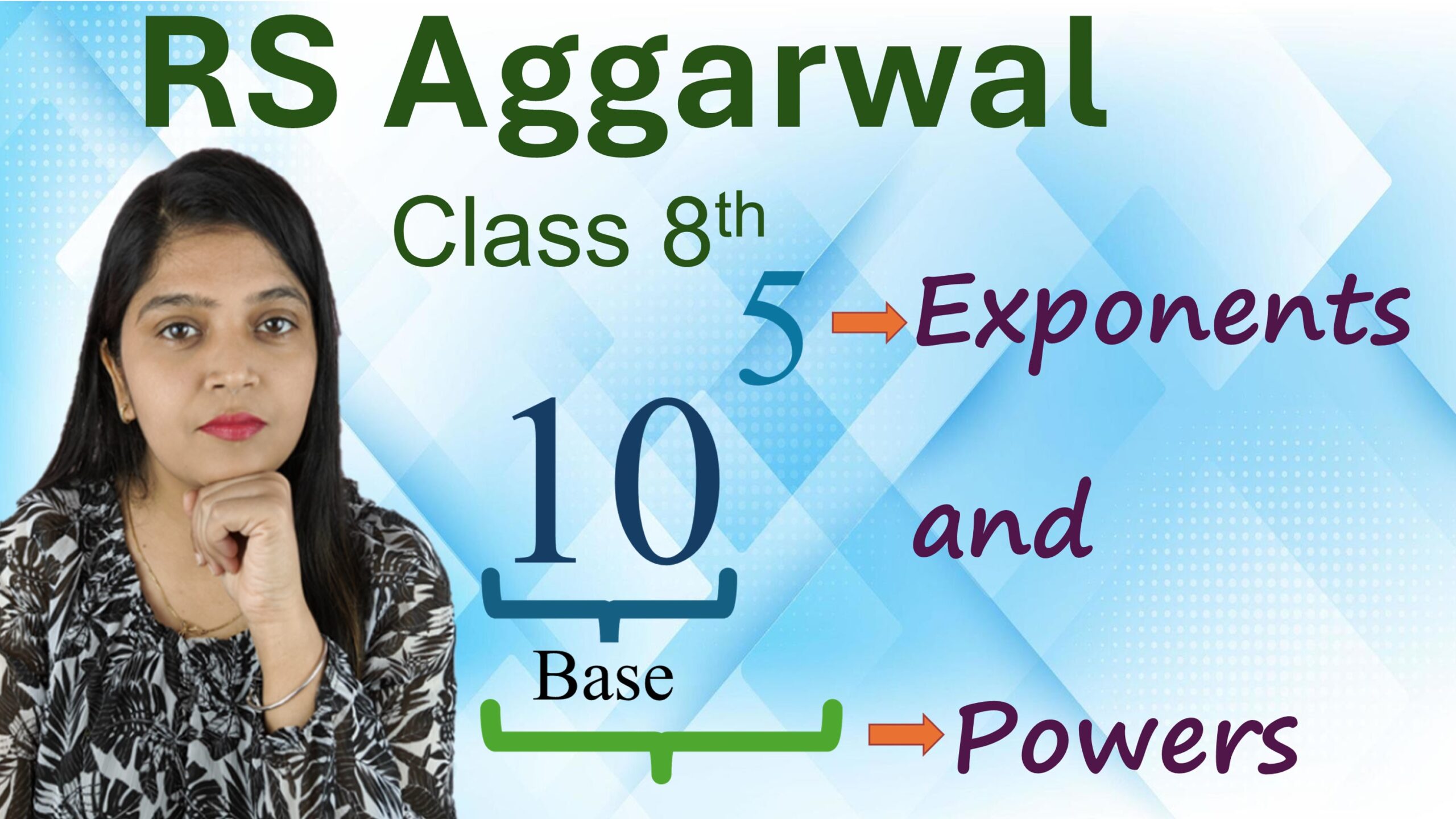Exercise: 2-B
Mental Maths
Q1: Fill in the blanks:
i. The value of \(\left(-5\right)^{-3}\) is __________
Solution:
– \(\left(-5\right)^{-3} = \frac{1}{(-5)^3} = \frac{1}{-125} = -\frac{1}{125}\).
Answer: \(-\frac{1}{125}\).
ii. \(\frac{1}{512}\) expressed as a power with base 8 is __________
Solution:
– \(512 = 8^3\), so \(\frac{1}{512} = \frac{1}{8^3} = 8^{-3}\).
Answer: \(8^{-3}\).
iii. The value of \(\left(\frac{1}{2}\right)^{-2} + \left(\frac{1}{3}\right)^{-2} + \left(\frac{1}{4}\right)^{-2}\) is __________
Solution:
– \(\left(\frac{1}{2}\right)^{-2} = 2^2 = 4\), \(\left(\frac{1}{3}\right)^{-2} = 3^2 = 9\), and \(\left(\frac{1}{4}\right)^{-2} = 4^2 = 16\).
– Therefore, \(4 + 9 + 16 = 29\).
Answer: \(29\).
iv. \(\left(-3\right)^4 \div 3^4\) is equal to __________
Solution:
– \(\left(-3\right)^4 = 81\) and \(3^4 = 81\), so \(\frac{81}{81} = 1\).
Answer: \(1\).
v. If \(3.3^n = 3\), then the value of n is __________
Solution:
– \(3^0 = 1\), so \(3.3^n = 3\) implies \(n = 0\).
Answer: \(n = 0\).
vi. The multiplicative inverse of \({10}^{10}\) is __________
Solution:
– The multiplicative inverse of \(10^{10}\) is \(\frac{1}{10^{10}} = 10^{-10}\).
Answer: \(10^{-10}\).
vii. \(\left(5^0 + 6^0 + 7^0\right) = __________
Solution:
– \(5^0 = 1\), \(6^0 = 1\), and \(7^0 = 1\), so \(1 + 1 + 1 = 3\).
Answer: \(3\).
Q2: Write true (T) or false (F):
i. \(a^m \times b^n = \left(ab\right)^{mn}\).
Solution:
– This statement is False. The correct rule is \(a^m \times b^n = a^m \times b^n\), not \(\left(ab\right)^{mn}\).
ii. \({(10)}^{-100} = \left(100\right)^{-10}\).
Solution:
– This statement is False. \({(10)}^{-100} = 10^{-100}\) and \(\left(100\right)^{-10} = \left(10^2\right)^{-10} = 10^{-20}\).
iii. The reciprocal of \(\left(\frac{3}{7}\right)^{-2}\) is \(\left(\frac{7}{3}\right)^2\).
Solution:
– This statement is True. The reciprocal of \(\left(\frac{3}{7}\right)^{-2}\) is indeed \(\left(\frac{7}{3}\right)^2\).
iv. \(\left(-a\right)^{-m} = \frac{1}{a^m}\)
Solution:
– This statement is False. The rule of negative exponents applies here: \(\left(-a\right)^{-m} = \frac{1}{-a^m}\).
v. \({10}^5 \times {10}^5 = {10}^{10}\)
Solution:
– This statement is True. By the property of exponents, \(a^m \times a^n = a^{m+n}\), so \({10}^5 \times {10}^5 = {10}^{10}\).
vi. \(p^\frac{-2}{5} \times p^\frac{2}{5} = 1\)
Solution:
– This statement is True. Using the rule \(a^m \times a^n = a^{m+n}\), we get \(p^{-\frac{2}{5} + \frac{2}{5}} = p^0 = 1\).
vii. \({(-8)}^{-3} \times \left(-8\right)^{-4} = \left(-8\right)^{-12}\)
Solution:
– This statement is False. By the property of exponents, \(\left(-8\right)^{-3} \times \left(-8\right)^{-4} = \left(-8\right)^{-7}\), not \(\left(-8\right)^{-12}\).







Leave a Comment